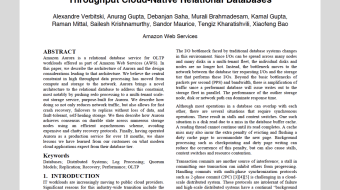Customer-obsessed science


Research areas
-
September 26, 2025To transform scientific domains, foundation models will require physical-constraint satisfaction, uncertainty quantification, and specialized forecasting techniques that overcome data scarcity while maintaining scientific rigor.
-
Featured news
-
AAAI 20242024The selection of the assumed effect size (AES) critically determines the duration of an experiment, and hence its accuracy and efficiency. Traditionally, experimenters determine AES based on domain knowledge. However, this method becomes impractical for online experimentation services managing numerous experiments, and a more automated approach is hence of great demand. We initiate the study of data-driven
-
Multi-Touch Attribution plays a crucial role in both marketing and advertising, offering insight into the complex series of interactions within customer journeys during transactions or impressions. This holistic approach empowers marketers to strategically allocate attribution credits for conversions across diverse channels, not only optimizing campaigns but also elevating overall marketplace strategies
-
Physical Review X2024Quantum error correction with erasure qubits promises significant advantages over standard error correction due to favorable thresholds for erasure errors. To realize this advantage in practice requires a qubit for which nearly all errors are such erasure errors, and the ability to check for erasure errors without dephasing the qubit. We demonstrate that a “dual-rail qubit” consisting of a pair of resonantly
-
CVPR 2024, CVPR 2024 Workshop on What is Next in Multimodal Foundation Models?, CVPR 2024 Workshop on Robustness in Large Language Models2024Generative Vision-Language Models (VLMs) are prone to generate plausible-sounding textual answers that, however, are not always grounded in the input image. We investigate this phenomenon, usually referred to as “hallucination” and show that it stems from an excessive reliance on the language prior. In particular, we show that as more tokens are generated, the reliance on the visual prompt decreases, and
-
Efficient retrieval and ranking of relevant products in e-commerce product search relies on accurate mapping of queries to product categories. This query classification typically utilizes a combination of textual and customer behavioral signals. However, new product categories often lack customer interaction data leading to poor performance. In this paper, we present a novel approach to mitigate this cold
Collaborations
View allWhether you're a faculty member or student, there are number of ways you can engage with Amazon.
View all














































